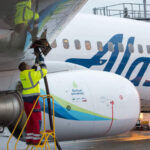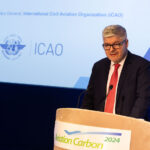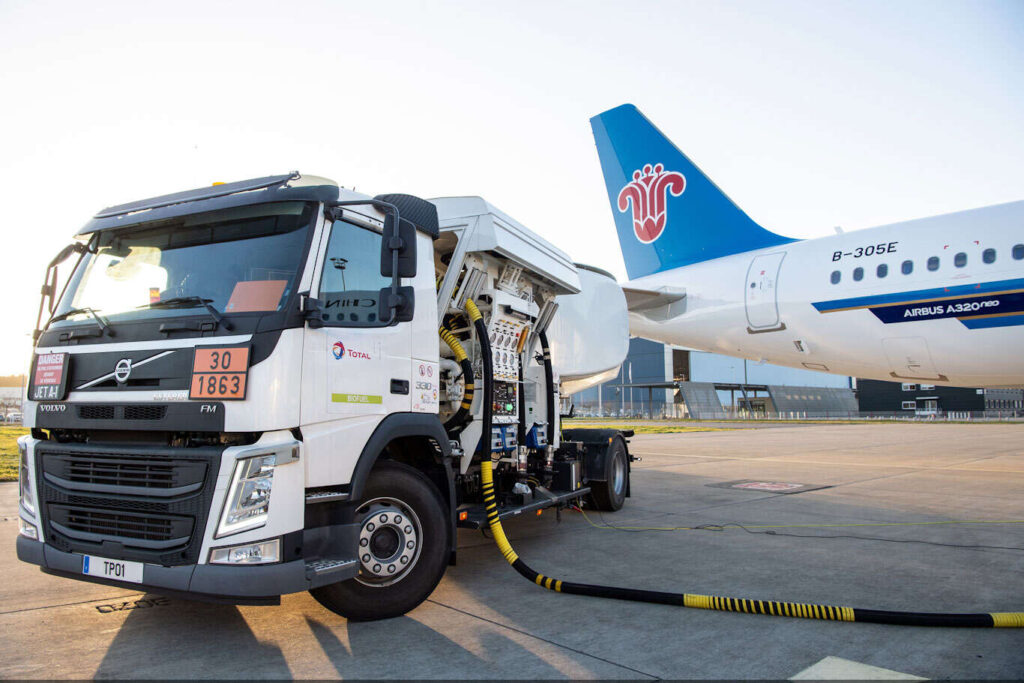A new report produced by a Chinese independent energy think tank has highlighted the lack of government support as a major barrier to the production and use of sustainable aviation fuel in China, the world’s second largest aviation market. In a 64-page paper titled ‘The Present and Future of Sustainable Aviation Fuels in China’, the Institute of Energy (IOE), a research and development body affiliated with Peking University in Beijing, says Chinese fuel producers, distributors and airlines, which are mainly state-owned, were reluctant to commit to SAF without explicit policy signals from central government. “Globally, SAF consumption increased from 6,000 tons in 2016 to 80,000 tons in 2021, but most of such consumption happened in the West,” it adds. “To date there has been no meaningful demand for SAF in China.” The Institute has urged a package of measures including clear plans and favourable policies for SAF development, establishment of a SAF research and development system, and pilot programmes for the use of SAF produced from various feedstocks.
The report was produced in line with the Institute’s Climate Change and Energy Transition Program, launched in March 2021 to provide policy recommendations and support to the Chinese government by setting science-based goals, identifying necessary steps and developing action plans for energy evolution. “Carbon emissions from aviation only account for about 1% of China’s total carbon emissions,” says the SAF report. “But given the fact that China has already reached the late stage of industrialisation, the carbon emissions caused by the development scale of traditional heavy industries will gradually reach a plateau. It is estimated that carbon emissions from these industries will go down in the next 10 years. By contrast, carbon emissions from the ever-growing aviation industry will be something to be reckoned with. The absence of top-down designs at the central government level will create a high level of uncertainty for the industry’s development.”
Because of their state ownership, the report says entities across the aviation sector “will remain hesitant, waiting for explicit policy signals from the government” on SAF initiatives. Under China’s 14th Five-Year Plan for Green Civil Aviation Development, the country is aiming to build SAF consumption to 50,000 tons by 2025, but, comments the IOE: “This is not a mandatory target and pales in comparison with conventional aviation fuel consumption that amounts to 30 to 40 million tons per year (2018-2019). It can hardly bolster the confidence of airlines and producers in making more SAF commitments.”
With the exception of Hong Kong-based Cathay Pacific, which the report acknowledges has been active in promoting, using and acquiring SAF since 2016, the IOE says large airlines based on the Chinese mainland “have not specified any plan, goal or pathway regarding SAF use”, instead continuously planning until they are required to use the fuel.
“In terms of market demand, without a mandatory SAF target, airlines will not take it as an urgent priority to promote SAF use and therefore have not introduced any further plans in this field except for the few test flights between 2011 and 2017. In terms of investment, large fuel suppliers such as SINOPEC and China National Petroleum Corporation will find it difficult to establish medium and long-term strategies for SAF production due to the tiny SAF market and the lack of clear policy signals,” says the report.
“SAF remains a nascent market in China. On the demand side, airlines in mainland China have only conducted four tests of aircraft flying on SAF since 2011, including commercial test flights. On the supply side, only two companies are truly capable of producing SAF, but remain at the trial production stage, with a designed annual capacity of approximately 150,000 tons. China still lags behind western countries which have been constantly experimenting with SAF over the past 10-plus years, with a momentum increasingly built up over the past several years.”
China has abundant feedstocks from which to produce SAF, from Hydroprocessed Esters and Fatty Acids (HEFA) such as waste cooking oils, which currently comprise the most common base for the fuels, to other sources including agricultural and forestry wastes, municipal organic solid wastes, industrial gases, energy crops and green hydrogen, of which much greater supplies are available, and which will progressively increase in use as a fuel ingredient.
While dedicated SAF production facilities were limited in China, the report observes that conversion of existing fuel plants could accelerate supplies. “Practically, in China it would usually take two to three years to build a new SAF production facility with an annual capacity of 100,000 tons. The time can be shortened to months or approximately one year if an existing Hydrogenated Vegetable Oil (HVO) facility or a refining facility with hydrogenation or hydrogen production systems is transformed.”
If no additional SAF or HVO production capacity was built, and existing facilities were expanded or repurposed to maximise SAF output, the report estimates that China’s total SAF production could reach 2.05 million tons in 2025, accounting for 4.5% of China’s total aviation fuel consumption.
It also draws attention to China’s significant support for biodiesel fuel production and electric vehicle development, to contrast the lack of support for SAF development and to highlight possibilities if the low-carbon aviation fuel were to receive similar support. “China exempts biodiesel that conforms to national standards from consumption taxes, and grants a refund of 70% of value-added tax,” says the IOE. ”By contrast, no targeted support measures have been instituted in the SAF industry.”
The report recommends the Chinese government to develop “explicit plans and favourable policies” to help advance the development of a SAF industry, and “to leverage fiscal funding to channel private sector capital into SAF-related industries.” It also recommends:
- the formation of a cross-ministerial coordination mechanism to help progress SAF development;
- better collection and collation of information on feedstocks and development pathways to help facilitate better allocation of resources to the industry;
- innovative collaboration between SAF industry partners;
- the establishment of a SAF research and development system to promote diversified development of the fuels; and
- China pilot the use of SAF variants produced from different feedstocks and through a range of technology pathways.
“If China moves early to industrialise SAF production and releases explicit policy signals, it will not only help complete its SAF supply chain and accelerate the post-Covid green recovery of its aviation industry, but will also help itself gain more initiative when participating in the development and improvement of rules on carbon emissions reduction by the global aviation sector,” concludes the report.
“Generally, the SAF industry faces both challenges and opportunities in China. If internal and external favourable conditions are fully leveraged to unleash the potential of SAF in reducing carbon emissions, the industry will be a strong boost to China’s endeavour to reduce carbon emissions from aviation, peak carbon emissions, achieve carbon neutrality and strengthen energy security.”
Photo (Airbus): A delivery flight from Toulouse of a China Southern A320neo in 2019 was partly fuelled by SAF















More News & Features
Progress on decarbonising the airline sector has been slow this year, says IATA chief
EASA releases status report on Europe’s SAF production and readiness to meet blending targets
Commentary: China’s fair and equitable solution to civil aviation’s climate challenge
New partnerships formed to drive e-SAF production in Nordic markets
IAG continues to go big on e-SAF as it inks 10-year offtake agreement with Infinium
US on the pathway to achieving its 2030 SAF Grand Challenge target, says DOE report